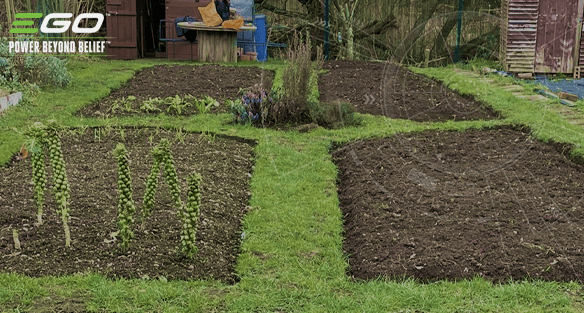Your garden beds are a source of endless possibilities. From growing soft fruit such as strawberries and raspberries, to being the perfect home to produce vegetables and herbs.
All this is possible provided your beds are given some much needed tender, loving care at this time of year.
Why you should rework your garden beds now
There are a number of reasons why February is the ideal time to get your protective gloves dirty and start reworking your garden beds:
- Frost, which is still a prospect at this time of year, will break down the turned over soil as well killing any harmful organisms living in it
- Any trees, shrubs, bushes or plants that have intruded your garden beds will be fully dormant and won’t suffer from being dug up or pruned back at this time of year
- Weeds that are growing in your beds will not have seeds left on the plants, so removing them is unlikely to cause further contamination
The essentials you need for working in your garden beds
Before you start working in your garden beds, make sure you have the right equipment to hand. You will need:
- Ear and eye protection, protective work gloves and safety footwear
- A garden fork or spade, or you can get the job done quicker and with just as little fumes by using a cultivator
- Bucket or wheelbarrow for collecting any organic waste that can go on the compost heap
- A garden rake for levelling the bed just before planting
Moving your garden bed
Sometimes you have to start from the ground up and just move your garden bed altogether. If this is the case, choose an area that is best suited for your plants to thrive. Things to take into account are:
- Drainage
- Soil pH
- Orientation
Most plants will thrive in pH neutral soil and a bed that faces south, as this will be the sunniest and warmest part of your garden. That being said, if your bed is north facing, then more hardy plants will do just as well.
There is more to building a garden bed from scratch, and although it may appear difficult, we have a blog on how to prepare a bed for planting. Just make sure you have a cultivator to hand.
Relocate any plants that are in the wrong place
Perhaps you've decided that your favourite lilac bush is better placed in the front garden, or you are doing some garden renovations and a whole bed needs shifting.
Rather than killing the plant, dig it up and relocate it to a more suitable spot. Now is the perfect time of year to do this.
Turn the soil over
Turning soil over brings nutrients that were deep in the soil to the surface, where they are more accessible to plants.
Using a garden fork, spade or cultivator, turn the soil over from about a foot deep, exposing the roots of the turf and any weeds. The subsequent frost that still occurs this time of year will kill the exposed weeds as well as breaking down the soil.
Remove exposed weeds
This is best done about 4-6 weeks after you have turned the soil over. Weeds that have been exposed to the elements will have died by this point, and so you can now easily pick them out the bed and throw them on your compost pile.
Rake the garden bed even
After the weeds have been removed, you should rake the soil evenly. This should be an easy task as the soil will be nice and crumbly after being subject to freezing temperatures at this time of year.
At the same time, you can throw on some well-rotted organic matter from the compost heap or some potash-rich wood ash which flowers, fruits and vegetables love. Just throw on about 2-3 inches worth and rake it into the soil whilst you are levelling the bed.
What if I don’t know what to plant in my garden beds?
The principles are the same no matter what you are planting. Whether that be vegetables such as kale, or fruits such as blackberries; by following the guidance above you will still see results whatever you choose to plant.
To read more tips and tricks garden maintenance related, then visit our EGO news page. From guidance on what to do with your hedge clippings, to creating an insect friendly garden - it’s all there.
